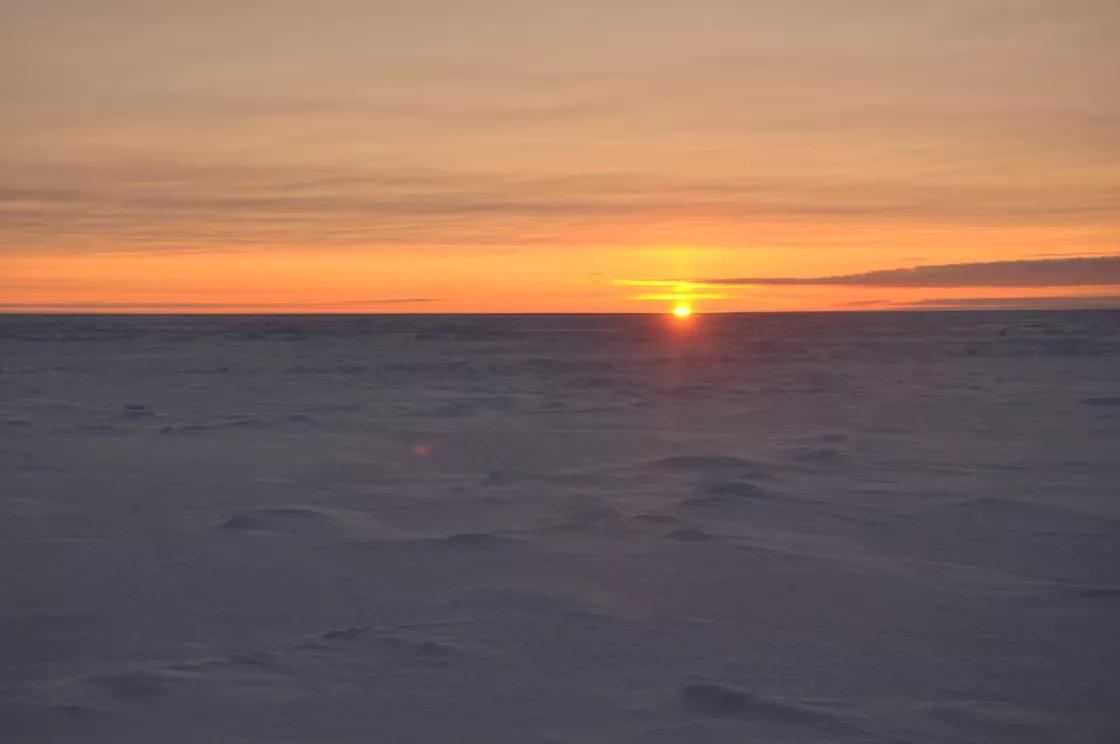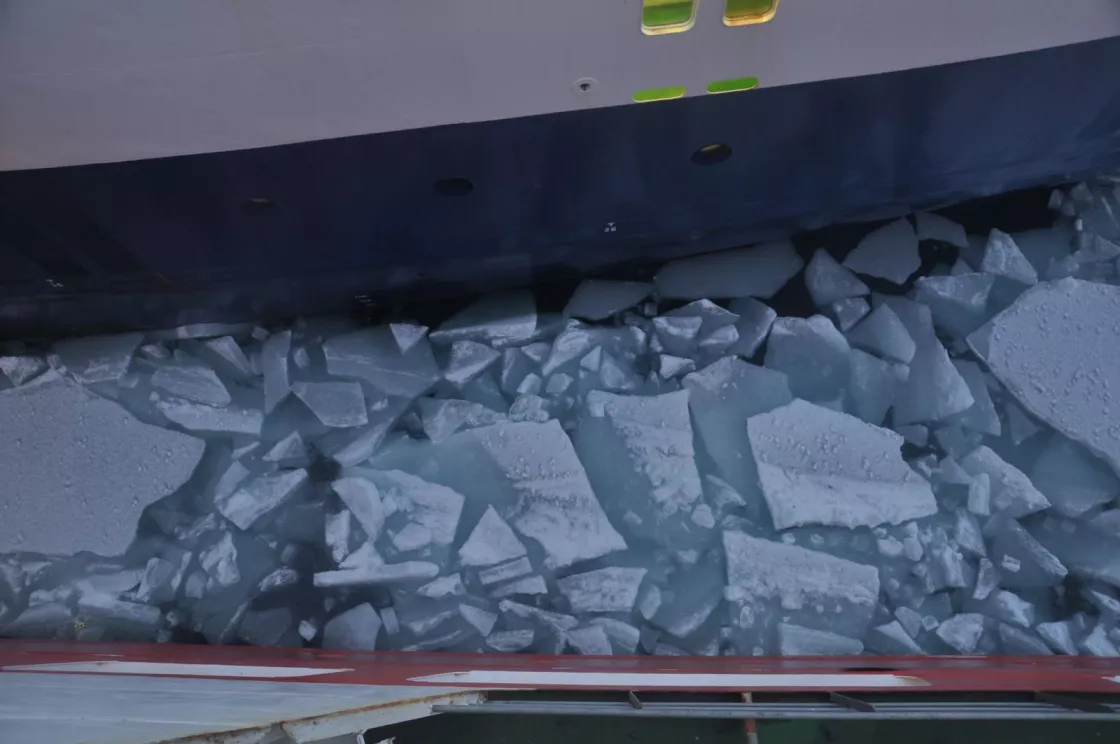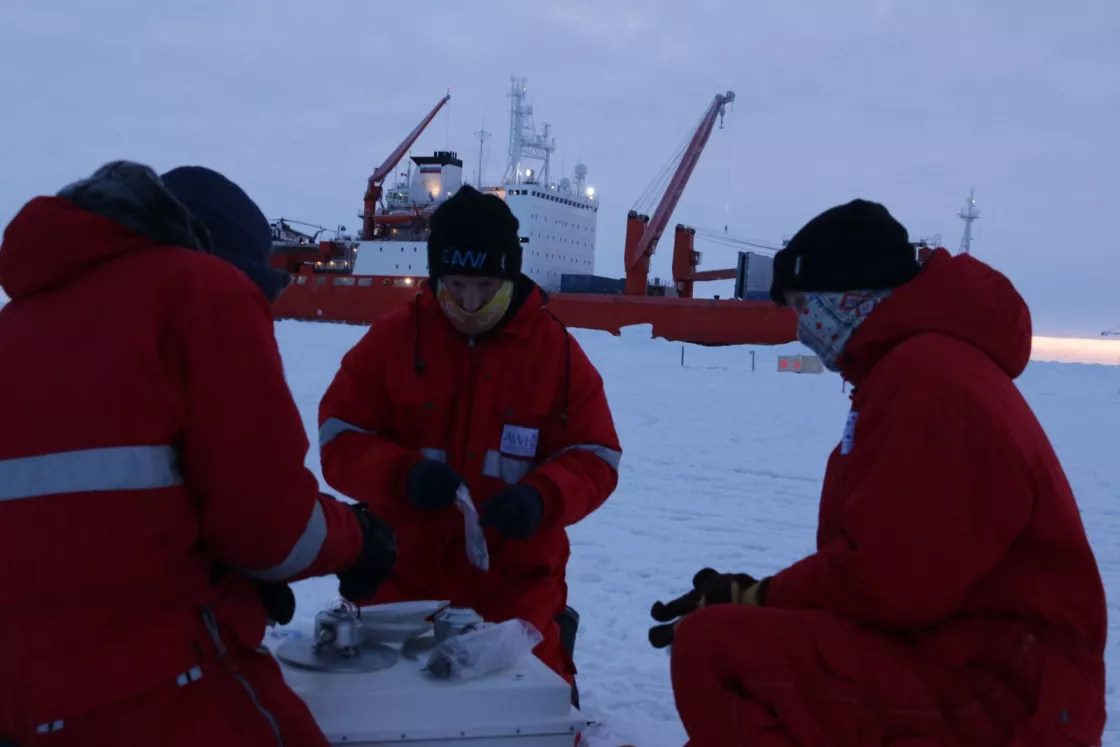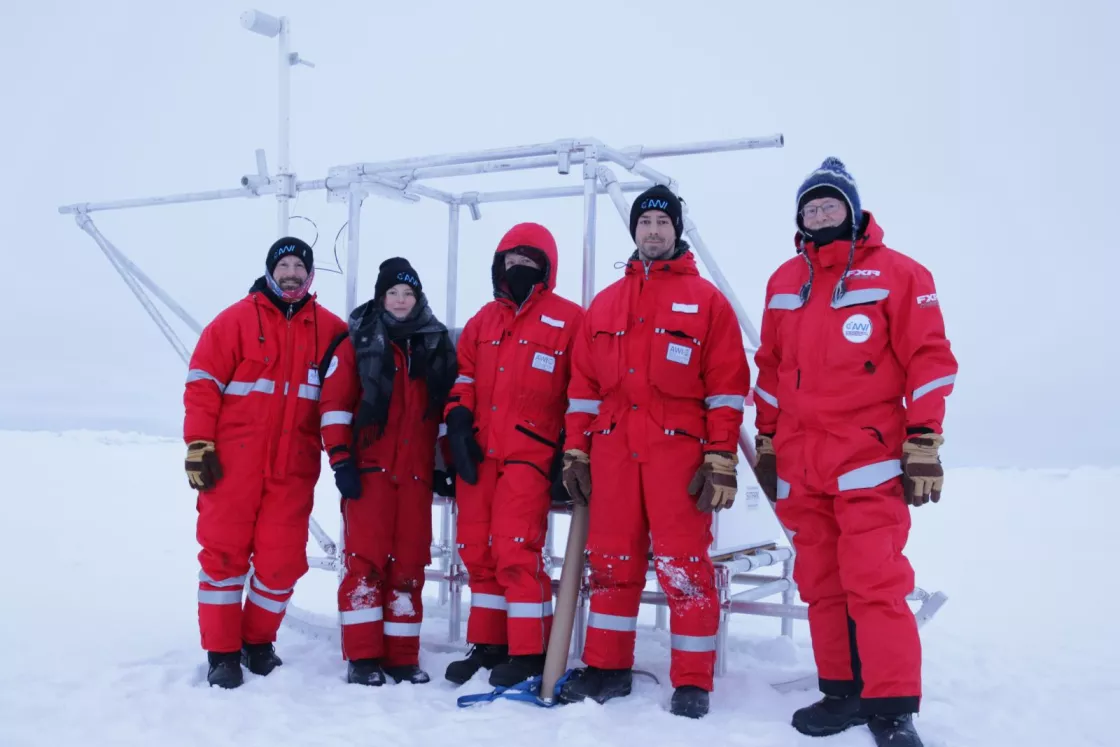By Audrey Payne
“The first time I saw sea ice, I lost my mind. It was mesmerizing,” said Sean Horvath, a PhD candidate at the University of Colorado Boulder who studies sea ice from afar. Each year, Horvath uses satellite data to build statistical models that forecast sea ice conditions up to seven months into the future. His models predict when and where sea ice is going to melt in the Arctic, and on which date sea ice will reach its annual minimum in September. Yet, until this past year, he had never seen Arctic sea ice in person.
An advisee of National Snow and Ice Data Center (NSIDC) scientist Julienne Stroeve, Horvath was one of twenty students chosen from six countries to take part in the Multidisciplinary drifting Observatory for the Study of Arctic Climate (MOSAiC) School. “Despite my work, I’d never been to the Arctic,” he said. “Watching sea ice is like watching a campfire. You can’t look away.”
From September to October 2019, the school offered a six-week training course organized by the Association of Polar Early Career Scientists (APECS) and the Alfred-Wegener Institute (AWI) that gave students and early-career scientists the opportunity to study the Arctic in person. The school is affiliated with the MOSAiC expedition, a $150-million scientific research mission to study the Arctic climate system by freezing a German icebreaker—RV Polarstern—into sea ice from September 2019 to September 2020.
Life at sea
While most of the scientists involved in the expedition stay on the Polarstern, the students lodged aboard a supporting Russian ship—RV Akademik Fedorov. The Federov left port from Tromsø, Norway, a day after the Polarstern, carrying equipment and additional scientists out to the ice floe where the Polarstern would be locked into the ice.
Getting to the ice floe took about two weeks. During that time, the students participated in daily classes in the ship’s chapel, a cozy room containing only folding chairs and a projector screen, and a slew of scientists lectured on their areas of expertise, which ranged from oceanography to ice physics to remote sensing. “I’m really interested in how expeditions like this are planned—how you get funding and ship time, for example—so I found the time aboard with the scientists really useful,” said Horvath. “I was able to learn a lot from their experiences.” Access to these scientists was the most valuable part of the expedition, according to Horvath, because he was able to garner advice from successful researchers whose work he had read time and time again.
While Horvath expected life on the ship to be a claustrophobic, he found the experience overwhelmingly positive. The students quickly formed a tight bond as a community and found creative ways to entertain each other. For example, when the onboard gym turned out to be a windowless room with only a ping-pong table, they took up the sport.
One student, doubling as a CrossFit instructor, held fitness classes on the deck of the ship. As word spread, the few brave souls sweating their hearts out on deck quickly became a crowd of fitness junkies. “When we first started doing CrossFit, we weren’t too far north so it wasn’t that bad,” said Horvath. “But as the ship carried us farther north, it got colder and colder. It would be 15 degrees Fahrenheit (-9 degrees Celsius) outside and we’d still be out there doing it in long underwear and beanies.”
They also played musical instruments and took photos together on deck, staring dreamily as huge chunks of ice overturned beneath the ship. “We’d often peek over the railing of the ship as it would move forward and break up the ice,” said Horvath. “Huge chunks of ice would slowly turn out from beneath the ship. There were so many different types of ice—some thin or deformed—and the turnout caused hills of ice to form. You don’t see that working with satellite data; you don’t get to watch the waves come up and bend the ice without breaking it.”
The friendships formed onboard the Federov, said Horvath, are the type that last a lifetime.
Work on the ice
Stepping onto the ice floe for the first time, Horvath was struck by the desolate and unique landscape surrounding him. He, along with his fellow students, quickly immersed themselves in work; their teamwork and comradery extended beyond the Federov. A distributed network of instruments needed to be set up around the Polarstern, and those on the Federov took up the challenge.
Scientists and students worked together on the ice floe surrounding the Polarstern for eight to nine hours at a time in the bitter cold, with a break about halfway through each day. A meteorological station and scientific equipment that traces gases, radiation fluxes, wind speed, and direction were assembled in a fifty-kilometer (thirty-one-mile) radius around the ship. “When we first set up the meteorological stations, it was in Boulder in July, and it was ninety degrees Fahrenheit outside. I had to wear gloves to protect my hands from the hot metal,” said Horvath. “The next time I saw the equipment was in the Arctic. I still had to wear gloves for protection, but due to the extreme cold.”
Scientists also drilled holes into the ice, placing buoys with attached sensors into them to measure ocean temperature, salinity, and velocity. The entire installation took almost two weeks. All the while, Horvath found himself scanning the horizon for polar bears, despite the bear guards stationed at the perimeter of the work sites.
Hovarth observed the scientists making decisions on the fly during the expedition. He expected that most of the big decisions would have been made in the planning phase, way ahead of arriving in the northern Arctic, but he found that was often not the case. For example, the Polarstern’s location within the ice floe was decided in the field.
“Here we were on this expedition that’s been ten years in the making,” he said, “and you couldn’t know in advance what the floes would look like. The ice was thinner than anyone expected, so plans had to be changed onsite.” The scientists had outlined criteria in advance—the floe had to be a certain size and thickness—but only so much of this information could be found via satellites. The team had to examine floes in person or electromagnetically scan and measure them using helicopters.
Processing the experience
Once the Polarstern was set up in the ice floe and the distributed network finished, the Federov turned south, returning to port at Tromsø. Months later, back in an office in front of a computer, Horvath is still processing the experience.
“What I really took away from this experience is how important field research is,” he said. “I’ve been studying the Arctic for three years now, and studying satellite data is so different from being there and seeing it. Collecting in-person data is just so important for calibrating your thoughts and perceptions of what is going on there. Once you have that, you can bring that knowledge back and make better use of some of the remote sensing data sets that we have.”
Horvath’s time with the MOSAiC School will have long-lasting impacts on his career. “This was the opportunity of a lifetime,” he said. He hopes programs like this will become more commonplace, allowing more up-and-coming scientists like him to experience the personal and professional growth that he did on the journey.



